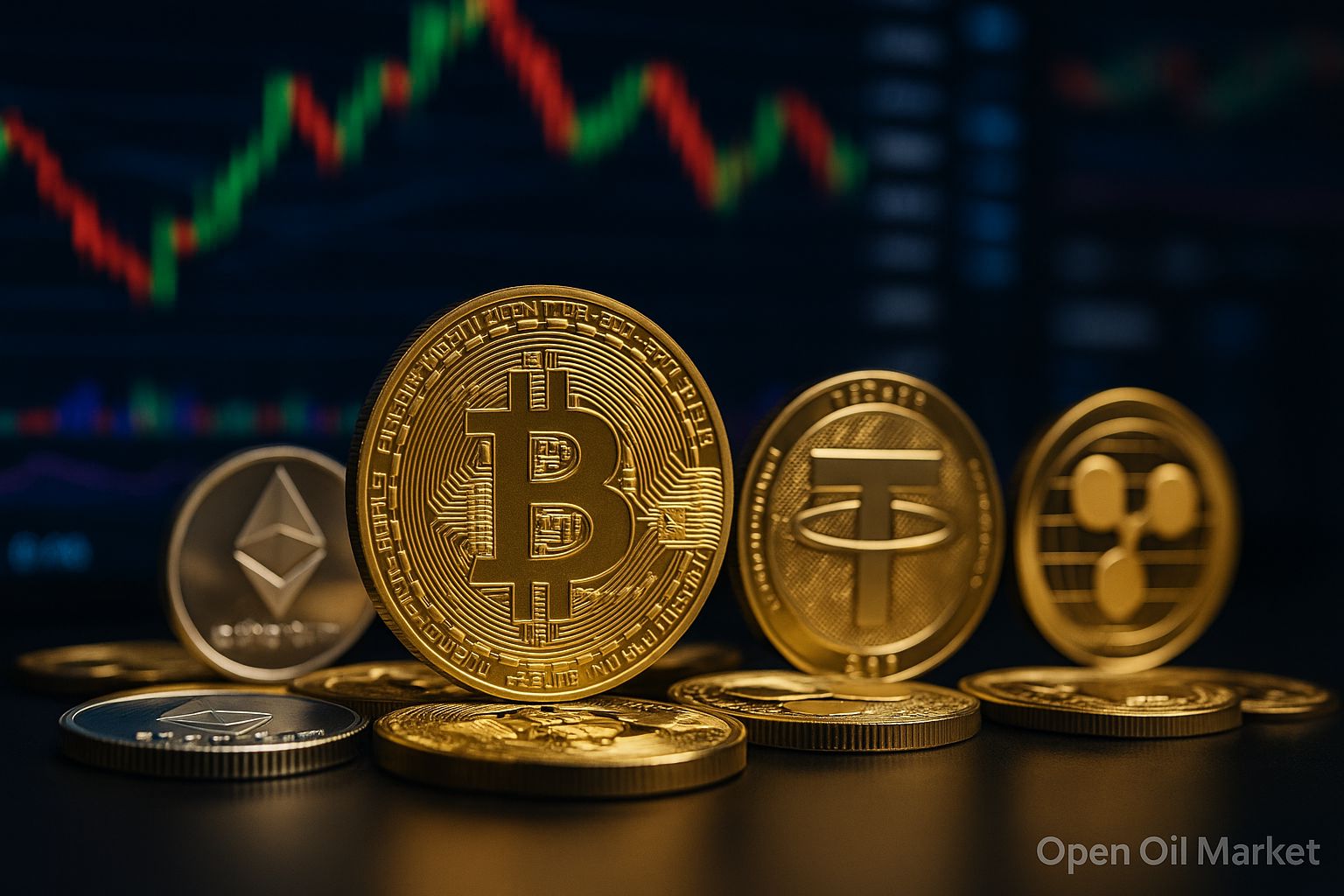
Detailed Review of Economic Events and Corporate Reports for Sunday, September 21, 2025. Analysis of the Fed's Policy, the Situation in China, and Market Dynamics in the USA, Europe, Asia, and Russia for Investors.
Sunday provides a respite for the markets: there are no major macroeconomic releases scheduled, and investors are digesting the events from the past week. The Federal Reserve's decision to lower interest rates and shift to a more accommodative policy has bolstered risk appetite—the S&P 500 index is nearing record highs. Concurrently, market sentiment in Asia is subdued due to signs of an economic slowdown in China, although the Chinese authorities promise stimulus measures. In Europe, there are no new negative surprises: inflation is gradually easing, and geopolitical uncertainty is diminishing. On the corporate front, there is a pause before the new earnings season, prompting attention to broader market factors. It is essential for investors to use this weekend lull to assess risk balances and prepare for the trading open of the new week.
Macroeconomic Calendar (MSK)
No key macroeconomic statistics are scheduled for publication on Sunday, September 21, as global markets await the start of a new working week.
USA: S&P 500 Record and Fed's Policy Easing
- In its mid-September meeting, the U.S. Federal Reserve lowered rates for the first time in several years, signaling the beginning of a monetary policy easing cycle. The regulator pointed to slowing economic growth and inflation leveling off to target levels, justifying a softer approach.
- U.S. equity markets reacted with gains: the S&P 500 index reached an all-time high on expectations of cheaper borrowing costs and support for corporate profits. The tech-heavy Nasdaq is also on the rise, fueled by investor enthusiasm for growth assets.
- Long-term Treasury yields are exhibiting volatility following the Fed’s decision. While the federal funds rate has been lowered, market yields on ten-year USTs are fluctuating, reflecting a reassessment of inflation and economic growth expectations.
Asia: Stimulus for China and the Bank of Japan's Course
- The Chinese economy is sending mixed signals: the latest data indicate a weakening pace of growth in the industrial and real estate sectors. Chinese authorities have assured markets of their readiness to implement new fiscal and monetary stimuli to support demand and avert a sharper decline.
- Japan: The Bank of Japan maintained its ultra-loose monetary policy (negative rates and yield curve control) during its September 19 meeting. Inflation in Japan remains above the targeted 2%, but the regulator prefers to wait for more stable price trends before changing its course. This keeps the yen weak, and the Nikkei 225 remains near multi-year highs thanks to support from export-oriented companies.
- Other Asian markets are trading cautiously. The absence of new data on the weekend leaves investors focusing on external factors: the U.S. equity rally and the prospects of stimulus measures in China will determine the dynamics at the opening of markets in Tokyo, Shanghai, and Seoul on Monday.
Commodity and Currency Market: Oil, Gold, and Ruble
- Oil: Brent crude oil prices remain near local autumn highs. Following a sharp increase earlier on the back of extended OPEC+ production cuts and declining inventories, the price has corrected and stabilized around $70 per barrel in recent days. The oil market is balancing between supportive factors (Fed policy easing, improving demand in Asia) and restraining factors (concerns over China's economy and rising non-OPEC production).
- Gold: Gold prices are hovering near record levels. Last week, the precious metal hit a multi-year high on expectations of lower Fed rates and a weaker dollar, surpassing $3000 per ounce. However, following the actual Fed decision, speculative demand has slightly decreased, and gold has pulled back somewhat, still remaining an attractive hedge amid monetary policy easing.
- Currencies and Ruble: The U.S. dollar, after an initial decline on dovish signals from the Fed, strengthened by the end of the week: the DXY index is consolidating around 100 points. The euro is holding around $1.19–1.20, reflecting moderate optimism regarding the Eurozone. The Russian ruble is trading relatively stable—around 90 ₽ per dollar—supported by high commodity prices and the absence of negative surprises in the Russian economy. Investors in the CIS are monitoring exchange rate dynamics: further easing of the Central Bank of Russia’s policy may slightly weaken the ruble, while expensive oil and the impending tax period traditionally support the national currency.
Corporate Sector: Earnings and Company News
- The global corporate calendar is virtually empty on this day: western stock exchanges are closed, and therefore major public companies (S&P 500, Euro Stoxx 50) are not releasing financial results on September 21. Investors are using this pause between earnings seasons to analyze already released results and assess projections.
- In the U.S., the earnings season for the second quarter has concluded, and most companies in the S&P 500 exceeded profit expectations. This has been one of the drivers of the summer rally: strong results from tech giants and consumer companies have bolstered confidence in demand stability. For example, recent reports from Oracle and FedEx indicated revenue growth due to cloud services and a stable consumer sector, respectively.
- European companies in the Euro Stoxx 50 index have not provided new data during the inter-season period, but the previous half-year results were generally decent. The banking and industrial sectors in Europe exhibited mixed dynamics—bank profits increased amidst rising ECB rates, while production corporations saw a slight margin decline due to expensive energy resources. Investors in Europe are awaiting new indicators in the form of business activity and consumption data to assess profit prospects for the end of the year.
- In Asia, attention was drawn to Chinese tech giants: although Alibaba and other e-commerce companies reported earlier and showed resilience, the market remains concerned about the economic slowdown in China. Japanese corporations have completed their earnings reports for the second quarter: many exporters (automakers, electronics) reported profit increases due to a weak yen. Ahead lies the third-quarter earnings season beginning in October; investors are already eyeing companies in the semiconductor, retail, and energy sectors, anticipating new guidance from them.
Other Regions and Indices: Euro Stoxx 50, Nikkei 225, MOEX
- Euro Stoxx 50: The leading European index ends the week without significant changes, consolidating after recent gains. The positive external background (Fed easing, absence of trade war escalation) is balanced by internal factors: the Eurozone is showing moderate economic slowdown, although inflation is heading towards the ECB’s target levels. The absence of new sanctions or crises supports the stocks of European exporters and banks. Focus for the coming week will be on PMI data and speeches from ECB officials that may set the tone for the Euro Stoxx 50.
- Nikkei 225 / Japan: The Japanese stock market is at its highest levels in several decades. The Nikkei 225 index has received a boost from the combination of a weak yen and the ultra-loose policy of the Bank of Japan, enhancing corporate sector export performance. After the earnings season wraps up (many Japanese companies exceeded profit forecasts), there are limited local drivers, hence Nikkei’s dynamics will depend on global investor sentiment and yen exchange rate volatility. Any hints at policy changes from the BoJ or fluctuations in demand from China could reflect on the Japanese market.
- MOEX / Russia: The Russian Moex index is navigating September with relative stability. The peak of financial earnings reports for the half-year has already passed: major companies reported at the end of August—early September, showing stable results overall. High prices for oil and gas support shares in the oil and gas sector, offsetting sanctions pressure risks. The financial sector benefits from the recent rate cuts by the Central Bank of Russia, stimulating credit activity, although it may slightly compress banking margins. Investors on the MOEX are now focusing on companies' dividend plans and potential government measures regarding budget rules—these factors will be crucial for the future trajectory of the Russian market.
Day's Summary: What to Focus on as an Investor
- Fed's Monetary Policy: Even on weekends, it is important to monitor comments from Federal Reserve representatives. Any new signals about the pace of further rate cuts or assessments of the U.S. economy could influence bond yields and sentiment across all markets at the beginning of the week.
- Chinese Stimulus: News from China over the weekend (such as statements regarding support for real estate or consumption) could set the tone for the Asian session on Monday. Investors should assess whether Beijing is doing enough to boost the economy, as this will affect demand for commodities and the profits of many global companies.
- Commodities and Geopolitics: Prices for oil and metals, in the absence of trading, may react to off-exchange news. Should geopolitical risks or emergencies arise over the weekend (for example, OPEC+ agreements, conflicts), sharp price fluctuations in commodities are possible on Monday. It's advisable to factor these events into your strategy in advance.
- European Indicators: Although there are no statistics in Europe today, important indicators (such as business activity indexes, confidence surveys, or inflation reports) will be released tomorrow. Their results will determine the movements of the Euro Stoxx 50 and EUR/GBP exchange rates. Investors should prepare for potential volatility in European assets at the week's start.
- Risk Balance and Positions: Sunday is an appropriate time to review your portfolio. Given that several indices are hitting record highs and the upcoming events of the next week, it is wise to establish target volatility corridors for yourself. Utilizing limit orders, partial profit-taking, and position protection (hedging) will help meet the new week more confidently, even if sudden news disrupts market calm.




